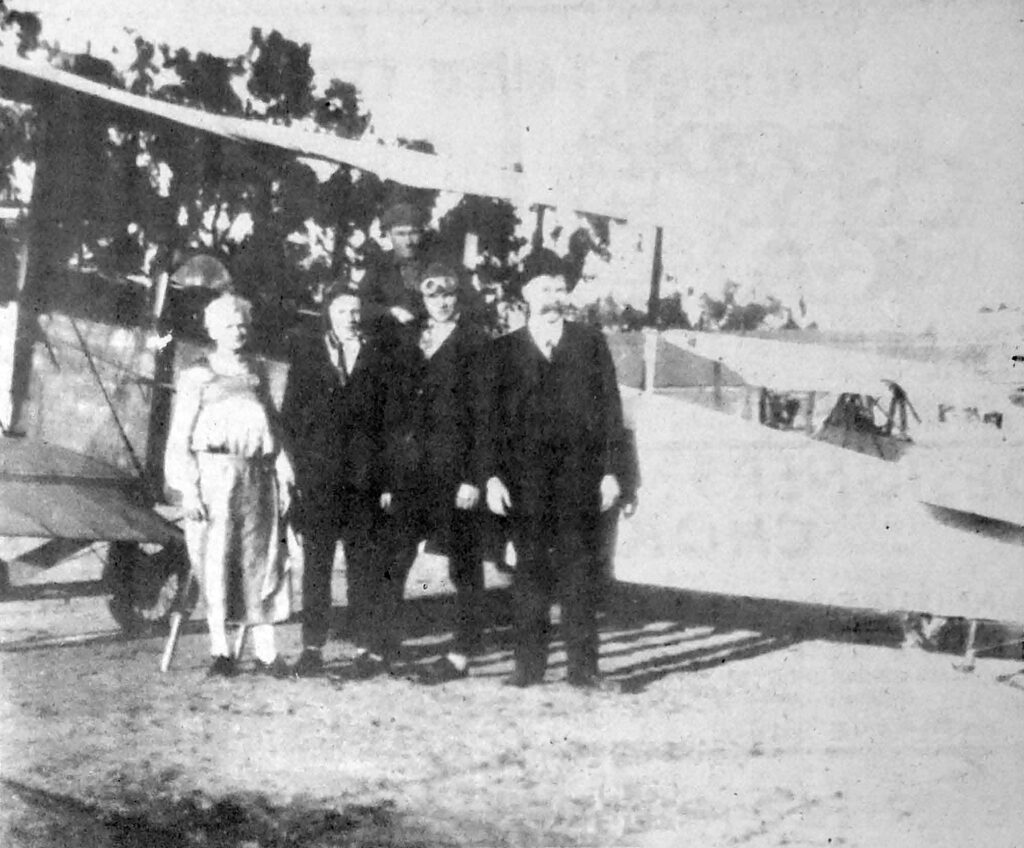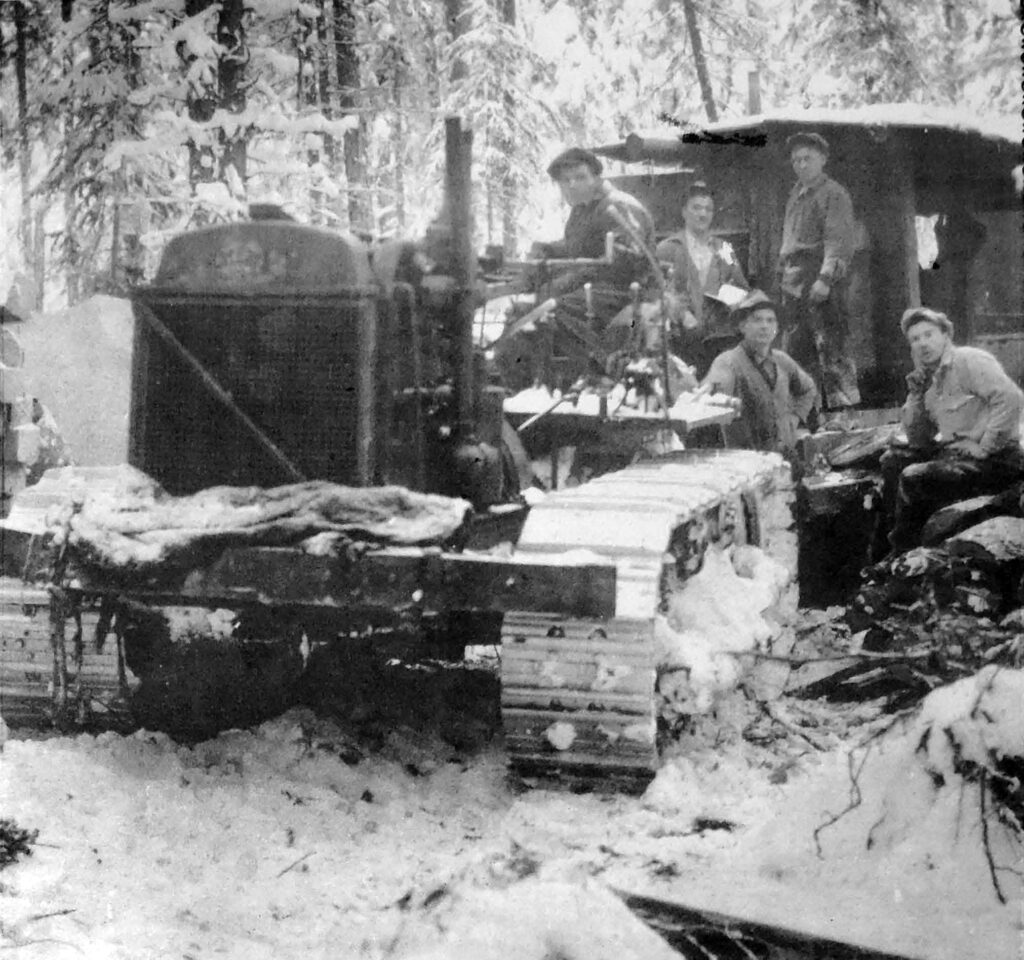The John Barr Family

From the Nostalgia Column of the Golden Star, November 8, 1978
Five generations of the Barr family have lived and are living in the East Kootenays.
This family who’s our origins were in Ireland, came to Canada early in the 1800s to settle and make their home out of the dense forest that once covered the rich farm lands of Ontario. Grandson of those early pioneers was John Barr. John who followed his sons Henry, Tom and Ed, came to the West before the turn of the century.
Almost 100 years have passed since then and still the name Barr is well known up and down the valleys that make up the East Kootenays. Three generations of this family live in golden today. But our story concerns the lives of John, his son Harry and a man who is part of the third-generation – Gordon Barr.
I would like to acknowledge the following sources of information: photo copies of Donald items -December 31st, 1893, examination of H. Redgrave, committed for trial, January 6th, 1894; “Yesterdays” series #11 printed in Cranbrook- excerpts will appear in quotation.
John Barr who was born around Fenelon Falls, Ontario, became a lumberman as he grew older. He married and raised a family of six children. Around the time his oldest son was eleven, John’s wife died. He didn’t remarry, but continued to bring up the family by himself. It can only be assumed that he waited until they all grew up before he himself decided to follow his older sons W John settled in Donald.
One evening while in the forest house in Donald, John got into a heated discussion with the print provincial constable by the name of Harold Redgrave over the relative merits of Irish Canadians in comparison to English Canadians. Constable Redgrave asked John to step outside to the water tower so that they could settle the matter. Once outside however Redgrave decided John was too big for him to fight and attempted to back down. The remainder of the story has two versions but somehow John ended up shot in the head. Although it was a painful wound, there were no serious results.
From the Donald items dash December 31st 1893: “Barr, the injured man is well known in this district, he having been identified with the lumbering industry for a long time and at present is the foreman for the Columbia River lumber company of Beaver and the respect he is held in by all the men who work under him is the best testimonial to his sterling qualities his word is as good as his bond and his heart is like his body…. big.”
John was taken to the Golden hospital but they couldn’t locate the bullet due to the swelling. It didn’t seem to bother him however so they left it alone. The constable surrendered and was brought to trial on January 6th 1894. Although the trial was published, the decision of the court was not.
Mr. A.P. Cummins was Stipendiary Magistrate. A G.M. Sprague appeared for the defence and at H.S. Cayley of Golden for the prosecution there is no record of John beyond this date. John’s sons Henry, Tom and Ed were born in Ontario, attending school in Fenelon falls.
Wages were low in Ontario in those early days to better their conditions, young men were turning their faces to the Prairie provinces, recently opened to settlement with the construction of the Canadian Pacific Railway. News of mineral wealth, of rich alluvial soil to be had for the asking, of marvelous forest growth standing ready to the acts had reached the east. The red God of the West was beckoning to the young Canadians.
Tom and Ed left with Headley Dartt of the Boer War period when it was over, and returning, bought a farm on the prairies while Tom stayed in Johannesburg for a time before he returned to Canada. He married in Vancouver. Henry Washington Barr lived in several areas in Alberta and British Columbia before making his way to the to the Kimberley, Fort Steele area. In 1929, a Campbell (Jack) Lewis staff reporter for the Cranbrook Courier, was commissioned to do a series of stories on old timers of the district. Henry also known as Harry bar was one of those old timers. Mr. Lewis’s style of writing was quite colourful and while space does not permit printing the entire article, here are a few quotes.
With others young Henry Barr, journeyman blacksmith, stout of body and sound of mind, saw the beckoning finger of opportunity, heard the siren voice of adventure. On the eighth day of May 1887, he bade farewell to Fenelon Falls and in due time found himself at Anthracite, near Banff, in the province of Alberta. From the moment of his arrival in the frontier town, he became a westerner one of the hardy handful which had set itself the task of creating a new empire West of the Great Lakes.
Work he found in plenty. Never was he idle. When he tired of the monotony of the forge, he sought excitement, with consequent high pay as a river driver on the turbulent Bow River. He experienced the thrill of shooting the Rapids in a battle, of searching for the key of logjams, leaping from the shore when the piled-up logs gave way under the pressure of pent-up floods, and knew the drudgery of waiting to the waste in an ice-cold torrent to release timber caught on the jagged rocks which thrust out their black fangs from out the turmoil of angry waters. Occasionally too, he helped bury the bodies of comrades whom a misstep had given too hungry torrents about and finally cast up on this shingle of lonely sandbars.
Harry and Billy McArdle found the hot pool that would become The Cave and Basin at Banff. They lowered each other down into the hot water to bathe. Billy McArdle remained in Banff but Harry came further west ending up as a blacksmith at Beavermouth. He returned to Alberta to work on the river. On the day he left in 1891, five of his friends drowned. It was back to Beavermouth and work on the snow sheds of Rogers Pass or with the CRL as general handyman until 1895 when he was hired as blacksmith at the North Star mine at Kimberly. Harry recounted his journey from Golden to Kimberley “I well remember that trip” said Mr. Barr, in recounting the journey from Golden to the North Star. “Captain Frank Armstrong was in command of the Little River steamer in which we set out to navigate the Columbia to its source at Canal Flats late in November. The voyage was a push and pull proposition right from the start. Twenty times a day, officers, crew and passengers were required to slip over side to ease the boat off sandbars or negotiate abrupt turns an windings in the torturous stream. Cold? Well rather! The swigs of liquor which we frequently took were mighty welcome, let me tell you. The boat, by the way, carried considerable liquid cheer, as cargo. We were a cheerful lot, with all and none more so than the reverend Nicholas Coccola, God bless him, who did his bit with the rest.
Literally, inch by inch we noticed our way up the river, into Lake Windermere and onto Mud lake, and there to stick fast in the rapidly forming ice.”
Finally they got the little steamer back to Windermere the cargo was unloaded and sent on to Wasa by teams and sleighs. The passengers traveled with the sleighs to Canal Flats and from there by canoe down the Kootenay river to Wasa.
Mr. Barr was blacksmith at the time on Maid Creek until 1897, when he decided to open a business at Fort Steele. Although the future of Fort Steele had looked promising the railway passed it by and the people just drifted away. Fort Steele had lived its little day.
Harry Barr saw its rise and fall, sensed its further decadence. In 1900 he judged it was time to seek more lucrative employment than that of the village blacksmith. And he wanted a home and children about him. So, he took to wife Miss Flora Constance Arnold, pioneer lady of East Kootenay.
With Mrs. Barr at his side, he established his present home at Wasa, clearing himself a farm, had born to him 13 children, eight of whom are living and took his place among prominent agriculturists in the district. None more progressive than he, as a visit to his farm on Lewis Creek was speedily determined.
He has harnessed the water of the Creek to drive his farm machinery, with water cutting with water power he cuts his fuel, grinds fodder for cattle and lights his home with electricity generated by his privately owned hydro plant.
Mr. Barr passed to his reward on December 28th 1933 after an eventful and useful life at the age of 64. His wife Flora, stayed on the farm for a few years, then she sold it and moved to Calgary. She later married again lived in Stovely, Alberta and died at the age of 89.

